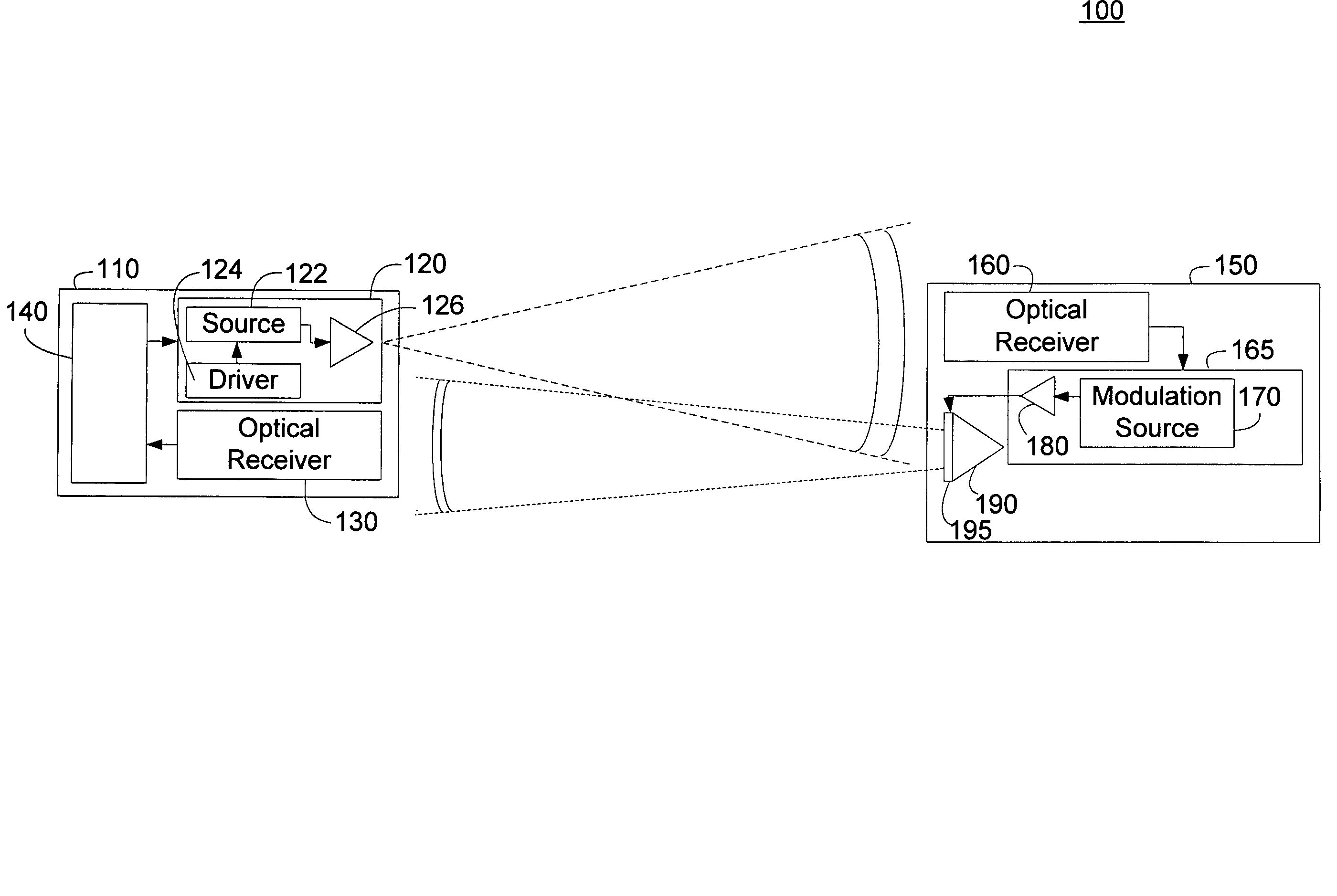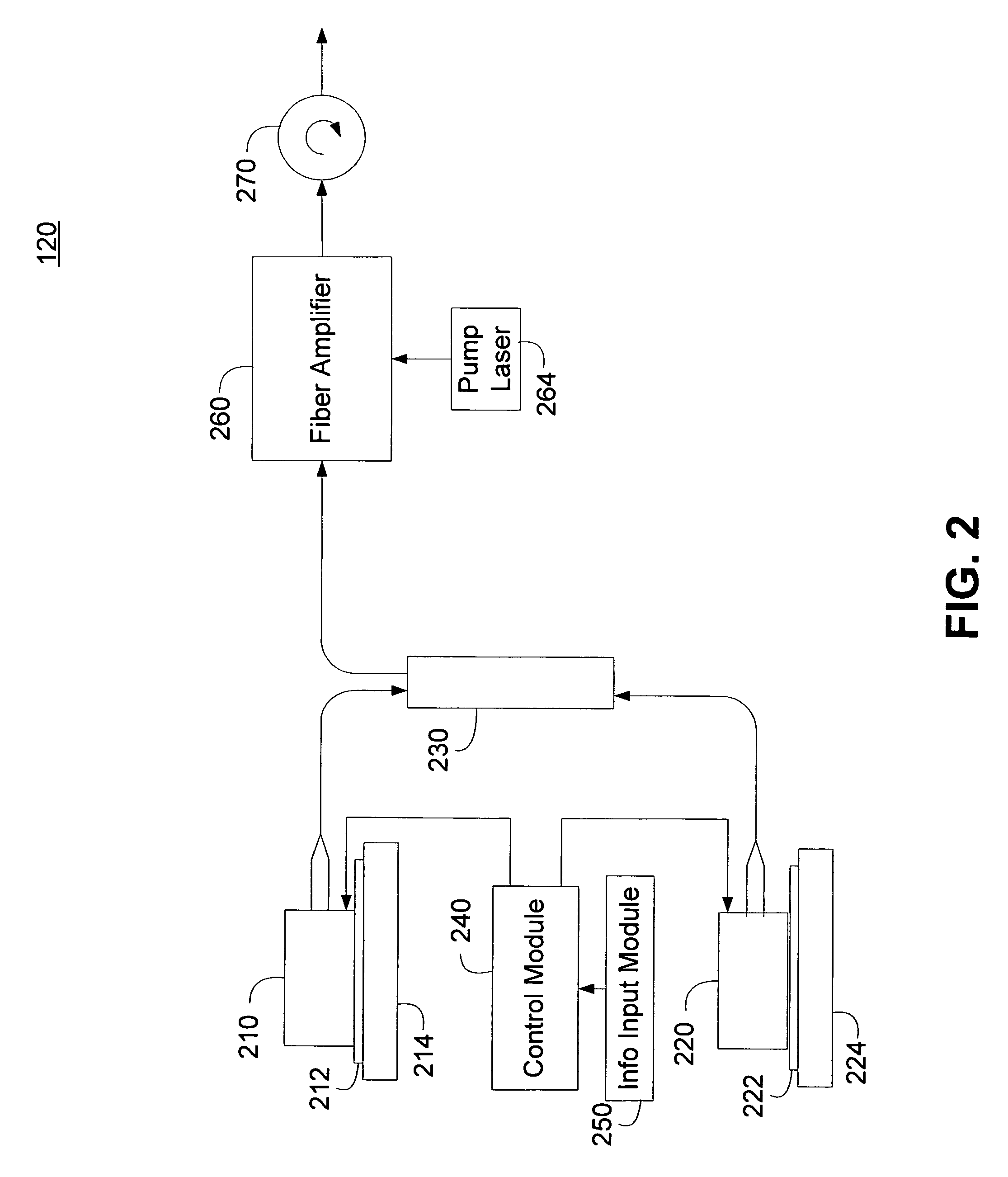Temperature compensated dynamic optical tag modulator system and method
a dynamic optical tag and modulator technology, applied in the field of temperature compensation dynamic optical tag modulator system and method, can solve the problems of difficult manufacturing of quantum well optical modulators having high breakdown voltage, difficult to manufacture electro-absorption optical modulators that are able, and temperature dependent modulation characteristics, etc., to reduce the dc bias required to tune the optical modulator
- Summary
- Abstract
- Description
- Claims
- Application Information
AI Technical Summary
Benefits of technology
Problems solved by technology
Method used
Image
Examples
Embodiment Construction
[0024]An optical transmitter and method of generating a pulsed optical output for a Dynamic Optical Tag (DOT) system that is configured to operate over an extended temperature range is disclosed. The pulsed optical output can be received by a remote Tag, where the received optical signal is retro-modulated by an optical modulator and reflected back to the optical transmitter. The DOTs system can be implemented using an optical modulator having a reduced reverse breakdown voltage requirement. The lower reverse breakdown voltage requirement allows for a greater yield of optical modulators and a reduced manufacturing cost. A quantum well modulator having the reduced reverse breakdown voltage requirements can be manufactured with a yield exceeding 70% while quantum well modulators requiring reverse breakdown voltages of 90 volts or greater typically have a manufacturing yield less than 10%.
[0025]The optical source can use two Distributed Feedback (DFB) lasers operating at distinct wavel...
PUM
 Login to View More
Login to View More Abstract
Description
Claims
Application Information
 Login to View More
Login to View More - R&D
- Intellectual Property
- Life Sciences
- Materials
- Tech Scout
- Unparalleled Data Quality
- Higher Quality Content
- 60% Fewer Hallucinations
Browse by: Latest US Patents, China's latest patents, Technical Efficacy Thesaurus, Application Domain, Technology Topic, Popular Technical Reports.
© 2025 PatSnap. All rights reserved.Legal|Privacy policy|Modern Slavery Act Transparency Statement|Sitemap|About US| Contact US: help@patsnap.com



